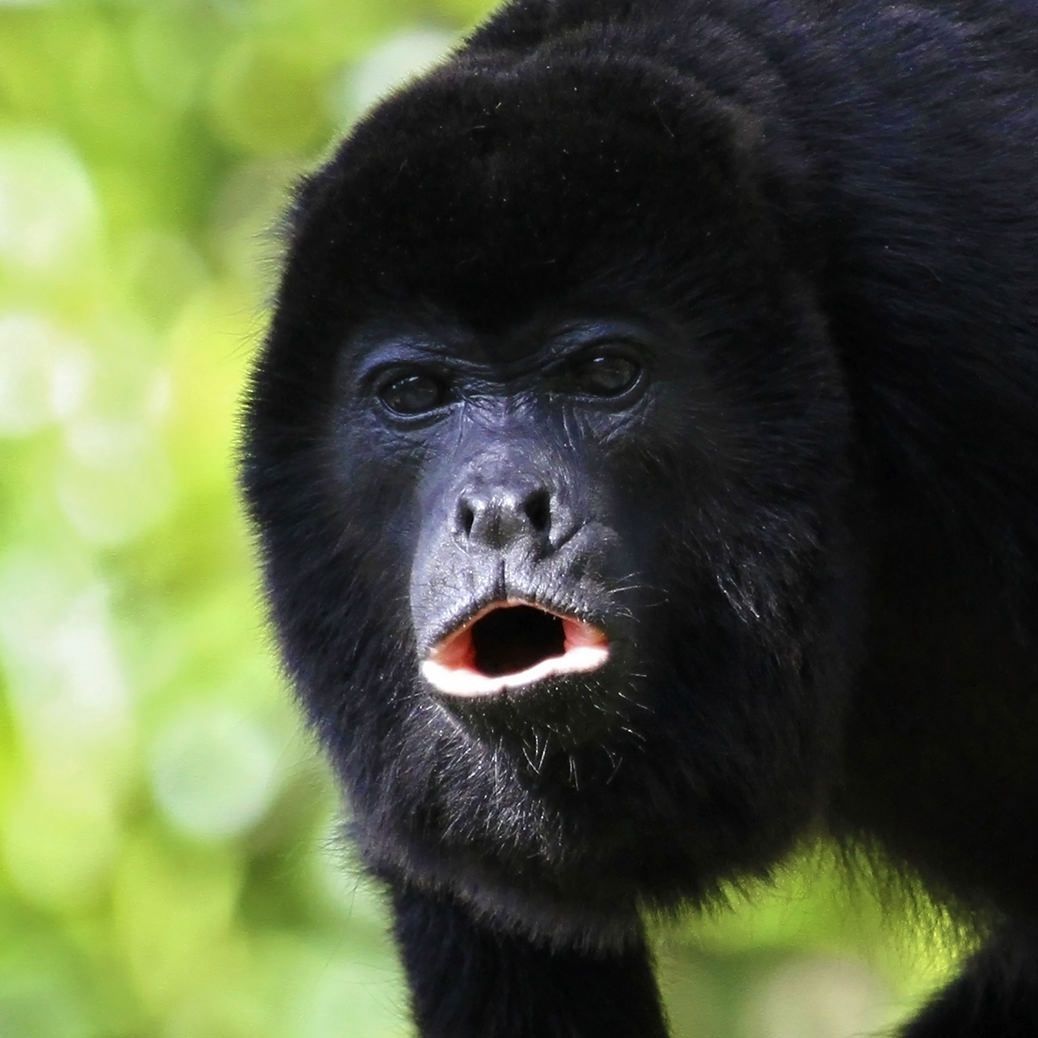In the dense rainforests of Belize, amidst the lush greenery and cacophony of wildlife sounds, one species stands out with its deep, resonant calls that echo through the trees—the Black Howler Monkey. As a symbol of Belize’s rich biodiversity, these enigmatic primates captivate both researchers and nature enthusiasts alike. Their mysterious communication methods, coupled with the challenges they face in an ever-changing habitat, highlight the delicate balance between conservation efforts and the preservation of Belize’s iconic species. Join us on a journey to explore the world of Belize’s Black Howler Monkey, delving into their unique characteristics, communication strategies, and the importance of protecting their natural environment.
The Enigmatic Black Howler: A Symbol of Belize’s Rich Biodiversity
The Black Howler Monkey, a symbol of Belize’s rich biodiversity, is a charismatic species that embodies the essence of the country’s diverse ecosystems. With their striking black fur and distinctive prehensile tails, these monkeys are not only visually captivating but also play a crucial role in the ecological balance of their habitat.
One of the key aspects that make the Black Howler Monkey iconic is its social structure and behavior within the rainforest. These monkeys typically live in small family groups, consisting of an alpha male, several females, and their offspring. This social hierarchy helps maintain order within the group and ensures the survival of the species in a challenging environment.
The Black Howler Monkey’s diet primarily consists of leaves, fruits, and occasionally insects, making them important seed dispersers in the rainforest. As they move through the canopy, they unintentionally transport seeds to new locations, aiding in the regeneration of plant species and contributing to the overall health of the ecosystem.
Moreover, their deep, resonant howling calls reverberate through the jungle, serving multiple purposes. These calls act as territorial markers, signaling their presence to other groups while also maintaining communication within their own group. The distinctive sound of the howler monkey is often heard at dawn and dusk, creating an atmospheric ambiance that is synonymous with the rainforest experience in Belize.
Despite their iconic status, Black Howler Monkeys face numerous threats to their survival, including habitat loss due to deforestation, human-wildlife conflict, and the illegal pet trade. Conservation efforts aimed at preserving their natural habitat and raising awareness about their importance in the ecosystem are crucial for ensuring the long-term survival of these majestic primates.
In essence, the Black Howler Monkey is not just a species of monkey; it represents the intricate web of life in Belize’s rainforests and the interconnectedness of all living organisms within this vibrant ecosystem.
Mysteries of Howler Communication: Unraveling the Secrets of Their Deep Calls
The communication methods of the Black Howler Monkey are as fascinating as they are essential for their survival in Belize’s rainforests. At the heart of their communication repertoire is their deep, resonant howling calls, which serve a variety of purposes within their social structure and interactions with other groups.
One of the primary functions of the Black Howler Monkey’s howling calls is to establish and maintain territorial boundaries. The loud and distinctive nature of their calls allows them to announce their presence to neighboring groups while also deterring potential intruders. This territorial behavior helps prevent conflicts between groups and ensures the availability of resources within their designated areas.
Furthermore, howling calls play a crucial role in social cohesion within the Black Howler Monkey groups. Members of the same group use these calls to communicate their location, coordinate movements during foraging expeditions, and signal potential threats or opportunities in the environment. The nuanced variations in their howling patterns convey valuable information to group members, facilitating effective cooperation and group dynamics.
Interestingly, the deepness and carrying power of the howling calls are attributed to the enlarged hyoid bone in the monkey’s throat, which acts as a resonating chamber. This anatomical adaptation allows their calls to travel long distances through the dense vegetation of the rainforest, maximizing their effectiveness in communication.
Moreover, researchers have observed that Black Howler Monkeys adjust the frequency and intensity of their howling calls based on environmental factors such as the time of day, weather conditions, and the presence of predators. This adaptive communication strategy enhances their survival chances and contributes to their overall resilience in their natural habitat.
In summary, the Black Howler Monkey’s howling calls are not just vocalizations; they are sophisticated communication tools that facilitate social cohesion, territory maintenance, and survival strategies within Belize’s intricate rainforest ecosystems. Understanding and appreciating these communication methods are vital steps towards conserving this iconic species for future generations.
Conservation Challenges: Protecting the Habitat of Belize’s Iconic Black Howler Monkey
Conservation challenges facing the Black Howler Monkey in Belize underscore the urgent need for proactive measures to protect their habitat and ensure their long-term survival. The iconic status of these primates is threatened by various factors, including habitat loss, human-wildlife conflict, and the illegal pet trade, highlighting the complex challenges faced by conservationists and policymakers.
One of the primary threats to the Black Howler Monkey population is habitat destruction due to deforestation and agricultural expansion. As pristine rainforests are cleared for logging, agriculture, and infrastructure development, the monkeys’ natural habitat shrinks, leading to fragmentation and isolation of their populations. This fragmentation disrupts their ability to move and find suitable resources, increasing their vulnerability to extinction.
Human-wildlife conflict also poses a significant challenge to Black Howler Monkey conservation efforts. As human settlements expand into forested areas, encounters between monkeys and humans become more frequent. Conflict often arises when monkeys raid crops or scavenge for food in human-dominated areas, leading to retaliatory measures from farmers and landowners. Finding sustainable solutions to mitigate these conflicts while ensuring the monkeys’ protection is crucial for their survival.
Furthermore, the illegal pet trade poses a serious threat to Black Howler Monkeys, as they are often targeted for capture and sale as exotic pets. The demand for these charismatic primates in the illegal wildlife trade puts additional pressure on wild populations already struggling to cope with habitat loss and other threats. Strict enforcement of laws against wildlife trafficking and public education campaigns are essential to curb this destructive trade.
Conservation initiatives aimed at protecting the Black Howler Monkey and its habitat are underway in Belize. These efforts include establishing protected areas, implementing sustainable land-use practices, promoting eco-tourism as an alternative income source for local communities, and raising awareness about the importance of conserving biodiversity. Collaborative partnerships between government agencies, conservation organizations, local communities, and international stakeholders are key to addressing the multifaceted conservation challenges facing the Black Howler Monkey and ensuring a sustainable future for this iconic species in Belize’s rich biodiversity.
Final Thoughts: Preserving Belize’s Iconic Black Howler Monkey
In conclusion, the Black Howler Monkey stands as a symbol of Belize’s rich biodiversity and the intricate web of life within its rainforests. Their deep, resonant howling calls echo through the trees, reminding us of the importance of conservation efforts to protect these iconic primates and their natural habitat.
As we delve into the world of the Black Howler Monkey, we uncover not just a species of monkey but a complex social structure, sophisticated communication methods, and the delicate balance between survival and the myriad threats they face.
The challenges of habitat loss, human-wildlife conflict, and the illegal pet trade highlight the urgent need for collaborative conservation initiatives. By preserving their habitat, mitigating human-wildlife conflicts, and combating wildlife trafficking, we can safeguard the future of the Black Howler Monkey and ensure that future generations can experience the wonder of Belize’s rainforests.
Furthermore, raising awareness and fostering a sense of stewardship among local communities, tourists, and global citizens are essential steps towards achieving sustainable coexistence with nature. Education, research, and responsible eco-tourism play crucial roles in promoting conservation ethics and supporting livelihoods that are in harmony with wildlife and ecosystems.
In our shared journey to protect Belize’s iconic Black Howler Monkey, every individual action counts. Whether it’s supporting conservation organizations, advocating for sustainable practices, or simply spreading awareness, we all have a role to play in preserving the natural heritage that makes Belize’s rainforests truly extraordinary. Together, we can ensure a brighter future for the Black Howler Monkey and the vibrant ecosystems they call home.




